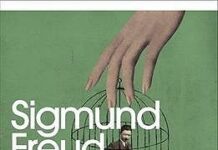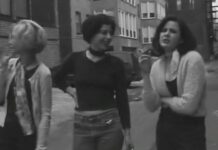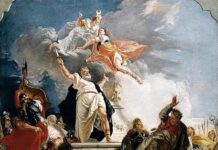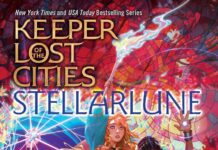In the sprawling landscape of American literature, few works delve as hauntingly into the fragile boundaries between truth and memory as Tim O’Brien’s In the Lake of the Woods. With its intricate weaving of political intrigue, personal trauma, and the elusive nature of recollection, the novel invites readers to navigate a labyrinth where reality is as murky as the waters it references. This review endeavors to unpack the layers of O’Brien’s narrative, exploring how the author challenges our assumptions about what can be known-and what remains deliberately obscured-in the human experience.
Exploring the Blurred Boundaries Between Truth and Fiction in In the Lake of the Woods and Its Impact on Readers

Tim O’Brien masterfully weaves a narrative where the lines between reality and imagination dissolve, compelling readers to question the reliability of memory and the very nature of truth. As the story unfolds, the protagonist’s fragmented recollections and the multiple, conflicting accounts invite us into a labyrinth of uncertainty. This purposeful blurring challenges the customary notion of a singular, objective truth, instead suggesting that truth is often subjective, malleable, and deeply entwined with personal perception. O’Brien’s technique not only destabilizes the reader’s confidence but also mirrors the complexities of human psychology, especially how trauma and guilt can distort memory.
Key elements that heighten this effect include:
- Unreliable narration that avoids clear answers
- Use of metafictional devices that question storytelling itself
- Interplay between what is witnessed,remembered,and imagined
- The juxtaposition of past facts with personal myth-making
| Aspect | Impact on Readers |
|---|---|
| Ambiguous Ending | Encourages multiple interpretations and active engagement |
| Memory Gaps | Creates empathy for the flawed human mind |
| Contradictory Testimonies | highlights the subjective nature of truth |
The Role of Memory as Both a Weapon and a Refuge in Tim O’Brien’s Narrative Structure and Character Development

Memory in Tim O’Brien’s In the Lake of the Woods acts as a double-edged sword-serving both as a destructive weapon and a fragile shelter. The novel’s fragmented narrative mirrors the unstable nature of recollection, where memories are unreliable yet potent forces shaping the characters’ psyches. O’brien deftly illustrates how memories can distort truth, weaponizing past experiences to build walls of silence and deceit. This manipulation is evident through the protagonist’s selective recollections,wich obscure reality and complicate the pursuit of closure. Hear, memory becomes a battleground where facts clash with emotions, forcing readers to question what is remembered versus what is intentionally forgotten.
At the same time, memory offers a sanctuary-an emotional refuge from the chaos surrounding the characters. It preserves intimate moments and truths that remain unspeakable in the present. The novel emphasizes how characters retreat into thier private mental archives, seeking comfort from painful external circumstances. This refuge is characterized by:
- Selective remembrance: Holding onto moments of love, hope, or innocence amid turmoil.
- Emotional preservation: Safeguarding feelings that define personal identity beyond surface actions.
- Narrative gaps: Embracing ambiguity as a form of protection from unbearable truths.
| Function of Memory | Manifestation in the novel | Impact on Character |
|---|---|---|
| Weapon | Obscuring truth through fragmented recollections | Creates distrust and internal conflict |
| Refuge | Clinging to preserved moments of peace | Provides solace amidst psychological turmoil |
How Political Backdrop and Personal Trauma Interweave to Create Tension and Mystery Throughout the Novel

Set against the turbulent backdrop of the Vietnam War and its lingering shadows on American society, In the Lake of the Woods masterfully entwines national history with the intimate unraveling of personal trauma. The political climate seeps into the narrative like an unseen current, influencing characters’ choices and shaping the pervasive atmosphere of suspicion. Tim O’Brien doesn’t merely position the war as a historical event; he uses it as a haunting echo in the protagonist’s psyche, creating a landscape where memory is as treacherous as the lake itself. This layering intensifies the tension, transforming the political into something deeply personal and unresolved.
O’Brien’s storytelling delicately balances the external chaos with internal disarray, reflecting the complexity of truth and recollection. Throughout the novel, the reader is confronted with:
- Fragmented memories that blur the line between fact and fiction
- Unspoken guilt that haunts the characters like a silent shadow
- Political suspicion that permeates interactions and motives
This intricate dance between public turmoil and private grief not only drives the mystery forward but also invites readers to question how history imprints itself on individual lives.The unresolved disappearance at the novel’s core is amplified by this duality, where political backdrop and personal trauma are inexorably knit into the fabric of uncertainty.
Decoding Symbolism and Metaphors That Enrich the Thematic Depth of This gripping Psychological Thriller

In Tim O’Brien’s In the Lake of the Woods, symbolism and metaphor do more than adorn the narrative-they excavate the subconscious, laying bare the intricate layers of truth and perception. The recurring motif of the lake itself serves as a fluid mirror, reflecting not only the characters’ external realities but also their fragmented memories and elusive truths. This watery expanse becomes a liminal space where certainty dissolves, inviting readers to wade through the murky depths of political scandal, personal guilt, and unresolved trauma. The characters’ interactions with the lake underscore a profound tension between concealment and revelation,echoing the novel’s thematic heartbeat of searching for clarity amid obfuscation.
Beyond the lake, O’brien’s deft use of fragmented narrative structure acts as a metaphor for the fractured mind, capturing the instability of memory and its role in shaping identity.Through the interplay of shifting perspectives and unreliable narration, the text unsettles the reader’s grasp on reality, mirroring the protagonist’s psychological unraveling. Consider this thematic breakdown that highlights key metaphors and their narrative functions:
| Symbol/Metaphor | Meaning | Narrative Function |
|---|---|---|
| Lake | Hidden truths, submerged memories | Physical and psychological boundary |
| Fog | Uncertainty, obfuscation | Creates ambiguity |
| Cards | Chance, control, deception | Represents strategic masking |
| Echoes | Residual guilt, haunting past | Connects past and present |
- Fragmentation: Reinforces the fractured psyche of characters and the disorder of truth.
- Silence and gaps: Speak volumes in what is left unsaid, illuminating the novel’s tension.
- Nature’s duality: Both a sanctuary and a threat, nature reflects inner turmoil.
Narrative Techniques That Challenge Readers to Question Reality and Interpret Multiple Perspectives Simultaneously

Tim O’Brien masterfully employs a constellation of narrative devices that compel readers to navigate the fragile terrain between what is real and what is remembered-or perhaps imagined. Through the frequent use of unreliable narration, the story’s reality becomes intentionally fragmented, prompting readers to become active participants in the quest for truth. This technique is complemented by the deployment of multiple viewpoints, including flashbacks and subjective accounts, which are not merely storytelling tools but instruments that fracture linear time and challenge singular interpretations. The effect is a literary kaleidoscope where facts shimmer differently depending on the angle of perception, urging readers to reconcile conflicting testimonies and piece together an elusive truth.
- Non-linear chronology: Time bends and loops, mirroring the fractured psyche of the characters.
- Interwoven memories and present events: Blurring the boundary between experience and recollection.
- Ambiguous character motivations: Encouraging multiple, often contradictory, readings of behavior.
- Shifts in focalization: Offering diverse angles that destabilize any singular narrative authority.
By designing the narrative architecture this way, O’Brien crafts a complex interpretative puzzle. The reader is invited to balance empathy with skepticism, assembling a mosaic that resists closure. Below is a brief table illustrating how different narrative techniques intersect to unsettle and enrich the story’s layers:
| Technique | Function | Effect on Reader |
|---|---|---|
| unreliable Narrator | Questions objective truth | Provokes doubt and curiosity |
| Multiple Perspectives | Introduces subjective realities | Encourages empathy with conflicting views |
| Non-linear Timeline | Disrupts causal expectations | Engages active reconstruction of events |
The Use of setting as a character: The Lake and Its Surroundings Reflect Emotional and Psychological States
In In the Lake of the Woods, the lake itself transcends its physical presence, morphing into a silent, watchful entity that mirrors the tangled, frequently enough obscured emotions of its characters. More than just a backdrop,the lake’s stillness contrasts sharply with the turbulent inner lives of the protagonists,serving as an unspoken witness to their secrets,regrets,and psychological fractures. The dense woods surrounding the lake amplify this sense of isolation,their shadows and labyrinthine paths echoing the obscured truths lying beneath each character’s carefully constructed façades.
This compelling use of setting invites readers to consider the environment as an extension of the psyche-each ripple on the water’s surface a reflection of unresolved tension, each foggy morning veiling uncomfortable memories. Key emotional and psychological states are suggested through natural elements:
- Misty mornings: Symbolize confusion and uncertainty.
- Still, dark waters: Represent hidden depths and suppressed truths.
- isolated forests: Indicate loneliness and entrapment.
The following table synthesizes these connections, revealing how O’Brien wields setting to deepen the narrative’s emotional resonance:
| Natural Element | Emotional/Psychological Reflection | Narrative Function |
|---|---|---|
| Lake’s Surface | Calmness and Deception | Masks inner turmoil |
| Fog and Mist | Ambiguity and obfuscation | Creates suspense and mystery |
| Encircling Woods | Entrapment and Isolation | Reflects psychological confinement |
A Close Look at Character Psychology and the Unreliable Narrator’s Influence on the Story’s Unfolding
Tim O’Brien masterfully immerses readers in the labyrinthine mind of John Wade, whose fractured psyche serves as both compass and confounder throughout the narrative. As Wade’s memories flutter between clarity and fog, the boundaries between reality and perception blur, compelling readers to question what is truly known. This psychological dissonance is heightened by the deliberate use of an unreliable narrator, whose omissions and contradictions invite multiple interpretations rather than definitive answers. through Wade’s introspective struggles, O’Brien illustrates how trauma can distort not only the past but also the mechanisms through which memory reconstructs identity.
The interplay between character psychology and narrative trustworthiness shapes the story’s unfolding in subtle yet profound ways. Emotions like guilt, denial, and obsession emerge as pivotal forces steering the plot, frequently enough leaving readers adrift in Wade’s perspectives while seeding doubt about the veracity of his account. Below is a brief outline of key psychological facets and their narrative effects:
- Selective Memory: Wade filters events to protect himself, shaping the story’s partial truths.
- Dissociation: Moments of emotional detachment fragment the timeline and increase ambiguity.
- Internal Conflict: Clashing desires for confession and concealment propel suspense and character depth.
- Obsessive Reflection: Repeated return to certain memories accentuates themes of regret and self-judgment.
| Psychological Aspect | Narrative Role |
|---|---|
| Amnesia & Memory Lapses | Induces mistrust and puzzles readers |
| Emotional Suppression | Delays revelation of critical plot points |
| Projection and Denial | Shapes unreliable accounts of other characters |
Themes of Guilt, Ambiguity, and the Elusiveness of Justice Explored Through complex Human Relationships
At the heart of In the Lake of the Woods lies a tangled web of emotions where certainty is a luxury that characters cannot afford. O’Brien masterfully dissects the psychological aftermath of war, where guilt seeps silently into the corners of memory, unspoken yet profoundly felt. Through the intricate relationship between John Wade and Kathy, the novel interrogates how personal transgressions and unspoken secrets can corrode trust, leaving behind a residue of suspicion and regret. This complexity is not presented in black-and-white; instead, it exists in a chiaroscuro of human frailty and moral ambiguity, compelling readers to question what can truly be known or proven about another person’s inner world.
Justice, in this narrative universe, is as elusive as the truth itself, slipping through the grasp of characters and readers alike. The novel challenges binary notions of right and wrong through layers of conflicting evidence and partial memories, inviting us to consider:
- How memory shapes perception and how selective recollections can rewrite history.
- The limits of legal systems when faced with emotional and psychological complexities.
- The delicate balance between empathy and judgment in interpreting human actions.
| Aspect | Interpretation | Effect on Characters |
|---|---|---|
| Memory | Fragmented and unreliable | Fueling doubt and mistrust |
| Guilt | Implicit and unspoken | Haunting personal demons |
| Justice | Ambiguous and unattainable | Perpetuating a cycle of unresolved grief |
Why In the Lake of the Woods remains a Relevant Study in Postwar American Literature and Historical Memory
Tim O’Brien’s In the Lake of the Woods remains a compelling exploration of the elusive nature of truth and the lingering shadows of trauma in postwar America. The novel artfully captures the tension between memory and reality, illustrating how history is frequently enough fragmented through the subjective lenses of those who live it. O’Brien’s narrative destabilizes traditional wartime storytelling by refusing closure, instead weaving a haunting puzzle that challenges readers to question the reliability of recollection and the broader cultural process of constructing historical memory.
Its relevance extends beyond literature into the realm of cultural introspection. The work resonates as it:
- confronts the silence surrounding psychological scars left by war,highlighting the frequently enough invisible wounds carried by veterans
- Interrogates political accountability and the moral ambiguity embedded within American foreign policy during turbulent times
- Illustrates the fragmented narratives that shape collective memory and the deliberate forgetting that accompanies national trauma
| Aspect | Literary Importance | Historical Connection |
|---|---|---|
| Memory | Unreliable narrators | Repressed trauma |
| Truth | Non-linear storytelling | Contested war narratives |
| Identity | Fragmented self | Veteran alienation |
Recommendations for Readers Who Appreciate Thought-Provoking Literature That Defies Simple Answers
For those drawn to literature that challenges easy interpretations,In the lake of the Woods offers a rich tapestry of ambiguity and psychological depth. Tim O’Brien masterfully blurs the lines between truth and memory, inviting readers to navigate a labyrinth where facts shift and perspectives intertwine. This novel is an ideal companion for anyone who enjoys unpacking layered narratives where every revelation raises new questions instead of providing tidy resolutions.
If you’re seeking books that provoke reflection and embrace complexity, consider exploring works that share thematic kinship with O’Brien’s novel, such as:
- Jean-Paul Sartre’s Nausea - a descent into existential uncertainty
- V.S. Naipaul’s Magic Seeds - grappling with identity in confusing political landscapes
- Ishmael Reed’s Mumbo Jumbo - a kaleidoscopic challenge to historical narratives
- Patricia Highsmith’s The Talented Mr. Ripley - psychological suspense with ambiguous morality
| Book | Core Element | Effect |
|---|---|---|
| In the Lake of the Woods | Unreliable memory | Unsettling suspense |
| Nausea | Existential dread | Philosophical introspection |
| Mumbo Jumbo | Reimagined history | Critical reflection |
| The Talented Mr. Ripley | Ambiguous identity | Psychological tension |
How Tim O’Brien’s Background as a Veteran Informs His Authentic Depictions of Trauma and Moral Conflict
Tim O’Brien’s experiences as a veteran deeply permeate his narrative style, enabling him to render trauma and moral ambiguity with striking veracity. His firsthand encounters with the chaos of war allow him to move beyond mere recounting of events, delving instead into the psychological and emotional landscapes that soldiers inhabit. O’Brien doesn’t shy away from presenting the fragmented,often contradictory nature of memory,capturing how trauma distorts time and perception. This nuanced portrayal resonates within In the Lake of the Woods, where characters wrestle with their own truths, mirroring the internal battles many veterans face long after the conflict ends.
His veteran background also informs a complex exploration of moral conflict,resisting simplistic judgments of right and wrong.O’Brien’s storytelling often unfolds through layered narratives, where the characters’ decisions reveal ”gray zones” shaped by fear, guilt, and loyalty. This sensitivity to multiplicity of perspective challenges readers to confront uncomfortable questions. Consider this breakdown of key elements influenced by O’Brien’s military past:
- Fragmented Memory: Portrayal of trauma’s impact on recall and storytelling.
- Ambiguous Morality: Avoidance of clear-cut heroes or villains.
- Psychological Realism: Detailed insight into emotional and mental struggles.
- layered Narratives: Use of multiple viewpoints to reflect subjective truth.
| Aspect | Impact on Narrative |
|---|---|
| Veteran’s Perspective | Authentic depiction of war’s aftermath |
| Trauma & Memory | Narrative fragmentation & unreliable narration |
| Moral Conflict | Exploration of ambiguous ethical choices |
| Emotional Depth | Complex character psychology |
The Enduring Legacy of Tim O’Brien as a Master storyteller Who Blends fact and Fiction to Reflect Human Complexity
Tim O’Brien’s storytelling transcends traditional narrative boundaries,skillfully weaving the blurred lines between what is real and what is remembered. In In the Lake of the Woods, the reader is plunged into a labyrinth of memories, uncertainties, and fragmented truths that mirror the inherent complexity of the human psyche. O’Brien doesn’t just tell a story; he invites readers to inhabit the confusion and ambiguity that define human experience, challenging them to question the reliability of perception and the nature of truth itself. Through his intricate narrative technique, O’Brien masterfully explores themes of loss, guilt, and the elusive quest for closure, making the novel resonate far beyond its plot.
What makes O’Brien a literary force is his bold fusion of fact and fiction,a tool that interrogates memory not as a static repository but as a living,often contradictory process.His writing reflects a deep understanding that human emotions and motives rarely fit neatly into simple explanations. Consider the following elements that characterize O’Brien’s narrative style:
- Fragmented storytelling: Stories within stories create a mosaic of perspectives that resist a single authoritative version.
- unreliable narrators: Characters whose own memories are fractured shape the story’s fluid reality.
- Blended genres: Combining historical facts with fictionalized internal landscapes enhances authenticity and emotional depth.
| Storytelling Element | Effect on Reader |
|---|---|
| Ambiguous endings | Provokes reflection and multiple interpretations |
| Non-linear timeline | Disorients yet immerses the reader in memory’s complexity |
| Emotional resonance | Creates empathy beyond the factual narrative |
In the Lake of the Woods leaves readers adrift in a sea of uncertainty,where memory and truth intermingle like shadows at dusk. Tim O’Brien’s masterful storytelling doesn’t hand us neat answers but instead invites us to navigate the murky depths ourselves, questioning what we know and how we know it. as the final chapter closes, we are left not with resolution, but with reflection-an enduring reminder that some stories, much like the past, resist being fully unraveled.









